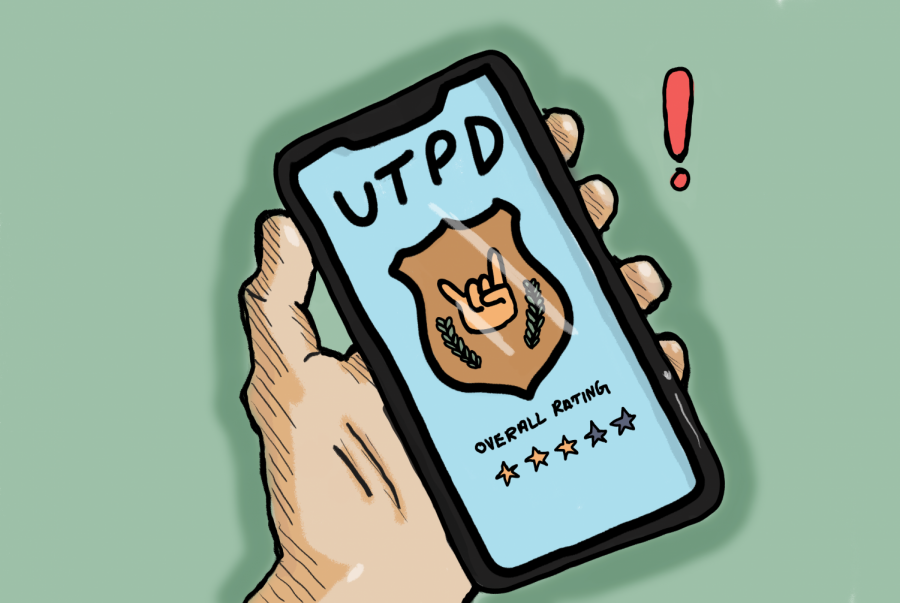Students deserve to know about UTPD’s progress with diversity training
August 8, 2021
Across various departments at UT, efforts are currently being made to promote diversity, equity and inclusion. These efforts are primarily a response to the public outcry against injustices faced by marginalized communities throughout the country that have been caught on camera. There has been a focus on the rampant police brutality that has plagued residents for centuries, especially the Black community.
Consequently, police departments across the country have shifted toward increasing their deescalation and implicit bias training. The University of Texas Police Department (UTPD) has also been a part of this recent shift. Though UTPD has been taking part in these training efforts, students do not have access to that information on the campus police’s website.
Students must have more transparency from UTPD concerning their racial sensitivity training and DEI education efforts. A progress chart on their website or town halls with students would be a much needed source of accountability.
Currently, students only have access to UT System’s racial profiling reports dating back to 2015 on the UTPD website, and the UT System’s Office of the Director of Police has its training calendar on it’s website. These are valuable resources because students can determine if there has been any decrease in racial profiling over time and if there is any correlation between training and incidents. But students shouldn’t have to parse through the UT System’s website to find the information they desire about their campus.
One recent notable DEI effort has been UTPD’s establishment of an in-house LGBTQIA+ representative position currently held by Sergeant David Chambers. This position was established so that officers would be educated on how to be more sensitive to different members of the LGBTQIA+ community. While this is an important step, this position isn’t highlighted on their website. Instead, Chambers’ efforts can be found in news articles and by searching through UTPD’s twitter.
UTPD already has a communication channel called LiveSafe that provides UT students accessible communication with police in case of an emergency, and the addition of a DEI progress list could help students view the developments in the department.
Understandably, students of color may be hesitant to call the police, fearing that their emergency could be worsened by police intervention. Thus, to inspire some level of trust, UTPD must at the very least be transparent about how they’re working against the racial biases that manifest in the police system.
Divine Nwokoye, radio-television-film junior, who has never interacted with campus police, noted that UTPD’s community outreach during her time in Austin was practically nonexistent, and they could combat this with visibility and empathy.
“I feel like just making themselves known not just as an organization but as people,” Nwokoye said.
Though sufficient information couldn’t be provided from the Office of the Director of Police on whether UTPD specifically could include their racial sensitivity training records on their website, Noelle Newton, the UTPD director of campus safety communications, was receptive to the feedback and encouraged students to reach out with any other suggestions also.
“We are working with our partners at (the) (Division of Diversity and Community Engagement) and the director of diversity and talent management within Financial Administrative Services for their input on how we should construct our web page,” Newton said.
In light of the rise of movements like Black Lives Matter that seek to hold police accountable for their actions, UTPD must make active efforts to support their students of color by being as transparent as possible.
Nfor is a public relations sophomore from San Antonio, Texas.



